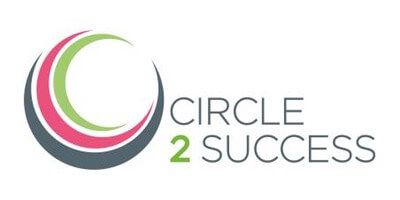At our recent Employment Law Update Breakfast meeting, we were treated to a presentation from Tracy Clark, CEO of Young Gloucestershire, a local charity that supports young people throughout the county. Tracy’s presentation discussed the challenges that employers often face owing to the generational differences of their workforces; something we discussed in last week’s blog post.
The topic became relevant for Tracy after she recognised that she had four different generations working in her own organisation and this was beginning to present some related issues. Delegates at the event also expressed difficulties that multigenerational workforces presented, many of which stemmed from problems with communication, and in particular how different generations interact and utilise different digital platforms.
Email and text messaging are pretty much ingrained as digital communication formats, and a lot of companies rely heavily on established platforms such as Twitter and Facebook; with some using the latter for their entire digital presence. Newer, and some might say ‘trendier’, platforms are becoming much more prevalent now, and the likes of Instagram and Snapchat are the default platforms for many.
A side-effect of Covid and the ensuing lockdowns was how we were forced, almost overnight, to adopt new technologies such as Microsoft Teams and Zoom in order to maintain visual relationships with work colleagues as well as with family and friends. How quickly these technologies would have otherwise been taken up on such a scale, will of course, never be known. We might speculate that, knowing some people’s resistance to change, quite a while. Possibly never.
The propensity for individuals to adopt new technologies may be explained by an alternative set of generational labels or stereotypes to the more commonly referred to Boomers and Millennials. These are:
- Digital Dependants: Born at or after the turn of the current century, these are people who have always known life with digital technology. For them technology is simply part of life and an expectation.
- Digital Natives: Are those who grew up alongside technology and have seen the changes happen. Being able to adopt and adapt to change is likely to come naturally for this group as they have needed to accept change in order to survive and thrive.
- Digital Migrants: Born without mainstream technology, this group have had to make a step-change from life without to life with. The rapidity of technological advancement over recent years has possibly been very challenging for people in this group, and for some, overwhelming.
As employees and workers, there is nothing to say that any one of these groups group has an advantage over the others. What is important however, is that we recognise that the differences exist so that it can be taken into account when we want to communicate to them. Just as we are aware that individuals have preferred learning styles, so too must we recognise that they have preferences in how they want to be communicated to.
We’re not suggesting that employers initiate a different communication method for each employee; but finding some common ground will mean that everyone receives communication in a format that they are likely to take notice of and can therefore be held accountable to.
Well worded clauses in your company handbook stating what form of communication the organisation accepts in which circumstances it a good idea. For example, we liked Tracy’s organisational policy that employees who are sick must speak to a line manager. So even if they send a text message initially, they must be available to receive a telephone call back from their manager or otherwise be assumed to be on unauthorised absence.
Insistence on written documents has given way to e-mails over recent years and now the likes of insurance companies, banks and even the Inland Revenue accept, and sometimes insist that communications are made electronically.
Let’s also not forget that digital communications come with some inbuilt advantages. Texts, Whatsapp messages and Tweets come with an in-built date and time stamp, which can prove very useful if a timeline of events has to be substantiated; in a disciplinary case for example.
You may want to supplement some more formal communications with a document that requires a ‘wet’ signature. There’s the psychological factor of physically signing your name to something that adds gravitas, plus we have never heard of anyone who has ever sent or received a ‘final texted warning’. And we wouldn’t want to be the ones who test whether or not it would stand up in a Tribunal.
Technological innovation continues at a blistering rate. We’re on the verge of driverless cars and no-one really knows what we can expect from Artificial Intelligence. If you feel like you might benefit from some support with a communication strategy or perhaps with organisational and cultural change, we’d be delighted to help. We still accept phone calls on 01452 331331 and e-mails too at info@hrchampions.co.uk





